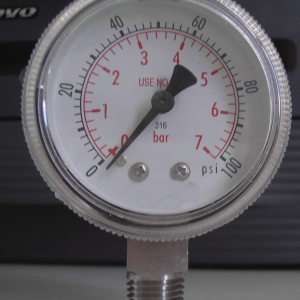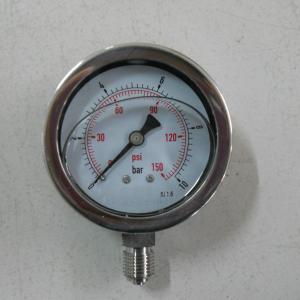The main features and precautions about vacuum gauge
1. The main features of vacuum pressure gauge are as follows:
a. Stable performance, high measurement accuracy and fast response speed.
b. It is an absolute vacuum gauge. The accuracy above 0.5 can be used as a standard vacuum.
c. The total pressure is measured, including the pressure of gas and steam.
d. The measurement result has nothing to do with the type, composition and nature of the gas.
e. In the process of measuring m, the vacuum gauge itself has little suction and deflation, and will not affect the measured atmosphere.
f. There is no high temperature component inside the vacuum gauge, which will not decompose oil vapor.
g. If corrosion-resistant materials are used, the pressure of corrosive gas can be measured.
h. The structure is firm and easy to seal and install.
I. The operation is simple, no adjustment is needed, but it needs to be checked regularly.
2. The precautions of vacuum pressure gauge are as follows:
a. Vacuum pressure gauge is a commonly used measuring instrument, which has certain applications in many fields. There are many problems that users need to pay attention to when using vacuum pressure gauges. For example, the measurement range, temperature and other problems [3]:
b. The ambient temperature of the instrument is -40~70℃, and the relative humidity is not more than 80%. If it deviates from the normal operating temperature by 20℃, the additional temperature error must be included. c. The instrument must be installed vertically, and strive to maintain the same level with the measuring point. If the difference is too high to account for the additional error caused by the liquid column, it is not necessary to consider when measuring gas. When installing, block the explosion-proof port at the rear of the case to avoid affecting the explosion-proof performance.
d. Measuring range for normal use of the instrument: under static pressure, it should not exceed 3/4 of the upper measurement limit, and under fluctuations, it should not exceed 2/3 of the upper measurement limit. Under the above two pressure conditions, the minimum measurement of the large pressure gauge should not be less than 1/3 of the lower limit, and the vacuum part is all used when measuring the vacuum.
e. If the instrument pointer malfunctions or the internal parts are loose or not working properly during use, it should be repaired, or contact the manufacturer for repair.
f. The instrument should avoid vibration and collision to avoid damage.



